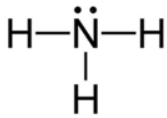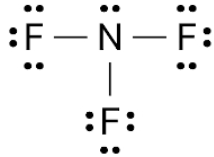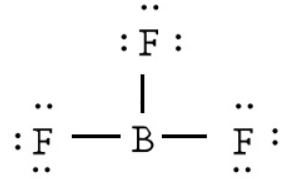
Which of the following arrangements of molecules is correct on the basis of their dipole moments?
(A) $B{F_3} > N{F_3} > N{H_3}$
(B) $N{F_3} > B{F_3} > N{H_3}$
(C) $N{H_3} > B{F_3} > N{F_3}$
(D) $N{H_3} > N{F_3} > B{F_3}$
Answer
220.2k+ views
Hint: How far away two electrical charges are from one another is measured in terms of a dipole moment. Dipole moments are a type of vector. The direction is from negative charge to positive charge, and the magnitude is equal to the charge times the distance between the charges. The formula of the dipole moment is $p = qd$ .
Complete step by step solution:
As we discussed above some characteristics of Dipole moment, let we consider the correct arrangement for the molecules on the basis of their dipole moment,
We know that, In $N{H_3}$ , the charge from three bonds was delocalised in the direction of lone pairs, towards nitrogen.


$N{F_3}$ has a greater dipole moment than $B{F_3}$ as a result of its pyramidal and trigonal planar structures. For $B{F_3}$ , there is no resulting dipole.

Therefore, from the above conclusion we get the correct sequence is $N{H_3} > N{F_3} > B{F_3}$ .
Hence, the correct option is (D).
Note: The dipole moment is helpful in determining how polar the chemical connection is: The bond becomes more polar as the size of the dipole moment grows. Non-polar molecules are those that have no dipole moment.
Complete step by step solution:
As we discussed above some characteristics of Dipole moment, let we consider the correct arrangement for the molecules on the basis of their dipole moment,
We know that, In $N{H_3}$ , the charge from three bonds was delocalised in the direction of lone pairs, towards nitrogen.


$N{F_3}$ has a greater dipole moment than $B{F_3}$ as a result of its pyramidal and trigonal planar structures. For $B{F_3}$ , there is no resulting dipole.

Therefore, from the above conclusion we get the correct sequence is $N{H_3} > N{F_3} > B{F_3}$ .
Hence, the correct option is (D).
Note: The dipole moment is helpful in determining how polar the chemical connection is: The bond becomes more polar as the size of the dipole moment grows. Non-polar molecules are those that have no dipole moment.
Recently Updated Pages
Electricity and Magnetism Explained: Key Concepts & Applications

JEE Energetics Important Concepts and Tips for Exam Preparation

JEE Isolation, Preparation and Properties of Non-metals Important Concepts and Tips for Exam Preparation

JEE Main 2021 July 25 Shift 1 Question Paper with Answer Key

JEE Main 2021 July 22 Shift 2 Question Paper with Answer Key

States of Matter Chapter For JEE Main Chemistry

Trending doubts
Understanding Centrifugal Force in Physics

JEE Main Marking Scheme 2026- Paper-Wise Marks Distribution and Negative Marking Details

Understanding Entropy Changes in Different Processes

Common Ion Effect: Concept, Applications, and Problem-Solving

What Are Elastic Collisions in One Dimension?

Understanding Geostationary and Geosynchronous Satellites

Other Pages
JEE Advanced Weightage 2025 Chapter-Wise for Physics, Maths and Chemistry

NCERT Solutions For Class 11 Chemistry Chapter 7 Equilibrium in Hindi - 2025-26

Understanding Excess Pressure Inside a Liquid Drop

Understanding Elastic Collisions in Two Dimensions

Devuthani Ekadashi 2025: Correct Date, Shubh Muhurat, Parana Time & Puja Vidhi

Quadratic Equation Questions with Solutions & PDF Practice Sets




